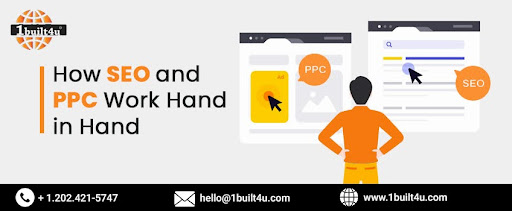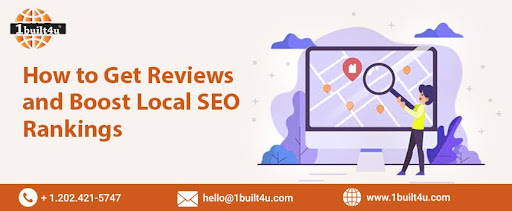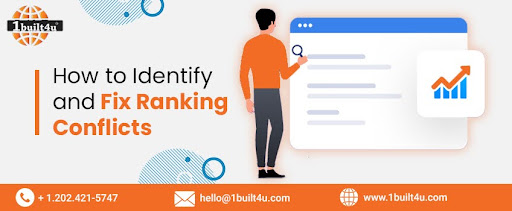
How SEO and PPC Work Hand in Hand
Among all the various forms of online marketing, search engine optimization (SEO) and pay-per-click (PPC) advertising are two of the most common practices in digital marketing. On the surface, there are two unique concepts – SEO aims to attain rankings naturally, while PPC deals with sponsorships of the links appearing on the search engine results pages. But, as was mentioned, SEO and PPC are not enemies – on the contrary, these two strategies complement each other well. Combined, these strategies can be beneficial in enhancing your visibility and traffic on the site to the maximum.
Regardless of whether you are new to SEO or have been using it in conjunction with PPC for a long time, in this post, our PPC management service in Ashburn VA, will be looking at ways in which SEO and PPC support each other and how to make the two blend seamlessly.
Targeting the Same Keywords
There are many places where SEO and PPC complement each other best, and one of the most significant is keywords. To achieve high ranking naturally, you must identify relevant keywords that your target audience uses in their searches and optimize your pages for such terms. Likewise, for focus to be placed on getting value from the PPC spend, it will be important to ensure that you are bidding on relevant keywords.
Thus, when your Content Marketing Services company in Ashburn, Virginia, is targeting keywords for SEO content and keyword targeting for pay-per-click ads are based on the same basic list of first-tier keywords, their efforts reinforce each other. Your landing pages are usually already tuned to the incoming traffic originating from PPC, while the PPC ad copy again emphasizes the terms you want to rank for in organic search results. This helps tell the search engines that your site is relevant to those particular searches.
Leveraging Search Query Data
Indeed, one of the biggest advantages of PPC advertising is the possibility of getting the list of search queries that customers use along with the context of the niche. Search term reports are available in tools such as Google AdWords which helps you to see the particular words and phrases that activated your ads.
This information can be very useful for enhancing PPC and SEO strategies. Utilize it to find other keywords you can use for further targeting, brainstorm new angles concerning advertising messages, and develop topics for creating content. Any information that is relevant and does answer the questions people have is good for both organic and paid strategies.
Supporting SEO Landing Pages
Another thing recommended about SEO is the use of specialized, unique web pages optimized for certain keywords instead of the home page. First, it offers a more relevant experience to distinguish between different pages, and second, it enables Google to understand the page's content and which searchers should be the target audience.
The issue with this is that designing unique landing pages for SEO requires considerable time and effort. This is where paid search ads are very useful – the traffic brought to specific landing pages by PPC ads is high-quality traffic, and the pages used for PPC ads are ready to produce high-quality results regarding organic search rankings from the get-go.
Driving More Traffic & Visibility
While SEO gives a gradual existence on the site's front page, PPC ads offer immediate exposure and traffic. Through PPC, you can effectively target highly relevant and immediate traffic, while through SEO, you can gradually work on raising brand awareness and obtaining consistent organic traffic over several months.
Organic and paid rankings are also mutually reinforcing, meaning that earned organic rankings influence paid ads. Consistency in quality score and relevance from a high SEO may enhance the efficiency and cost of PPC advertisements. On the other hand, the PPC ads traffic and attention to the pages, support the 'popularity' signals that the search bots use for the organic ranking factors.
Crafting Coordinated Messages
For example, when SEO and PPC campaigns are applied for the same keywords, which convey two different messages, it isn't very clear for the visitors, and branding is also hampered. Rather, try to have integrated messages consistent with one another regarding the communication medium to use.
Consistency in using keywords, tags, product names, value propositions, and brand presence increases credibility and awareness. This way, you would like the potential customer who stumbles upon your brand in the organic and paid results to feel familiar with the message and know they are in store for a certain experience.
This alignment not only increases conversions but also adds to the effectiveness of relevancy signals in the eye of the search algorithms. However, the copy should be somewhat similar in some way or form. To be effective, paid and organic listings must be unique to the channel but should stay within the message that is fundamental to all the channels.
Competitive Gap Analysis
Competitor analysis can also be done by using SEO and PPC data as they give information on competitor activity. Utilize the clickstream report in PPC campaigns to identify paid keywords with the highest conversion and revenue rates to competitors. Find out what the competition does right after identifying your competition and what they are doing.
Keyword monitoring tools and organic ranking checkers also make measuring the levels of competitor SEO work possible. Evaluate the terms they rank well on, the level of optimization you have in these areas, and where you could leapfrog them.
Monitoring Performance & ROI
One last link that connects SEO and PPC is the performance comparison with the set business goals and metrics. Both of these initiatives feed leads and sales; therefore, performance and ROI metrics are necessary to determine how the two should be financed regarding the other. Key metrics to examine across organic and paid channels include:
- Traffic volume
- Lead generation
- Conversion rates
- Revenue per visitor
- Cost per acquisition
- Total sales influenced
By using this kind of performance data, you will be easily able to identify areas that are most synergistic to focus more on and major strategies that should require more attention to be given or even those that should be changed or even stopped. Remembering that each part of your digital marketing strategy affects ROI will be useful.
Conclusion
With a bit of thought, strategic planning, and isolating key areas of success based on performance data, you can create a synergistic system where SEO and PPC play off each other at every stage. Get top-of-funnel branding and mid- and bottom-funnel lead generation and conversions to work synergistically.
If you are still a beginner and want to determine what SEO, PPC, and other aspects of digital marketing require, seek assistance from experienced professionals. Our superior integrated strategies combine the company's cross-channel programs for your desired outcome. Give us a call today to find out more information or to avail services of our Search Engine Marketing Company, Ashburn USA, visit 1built4.com!





